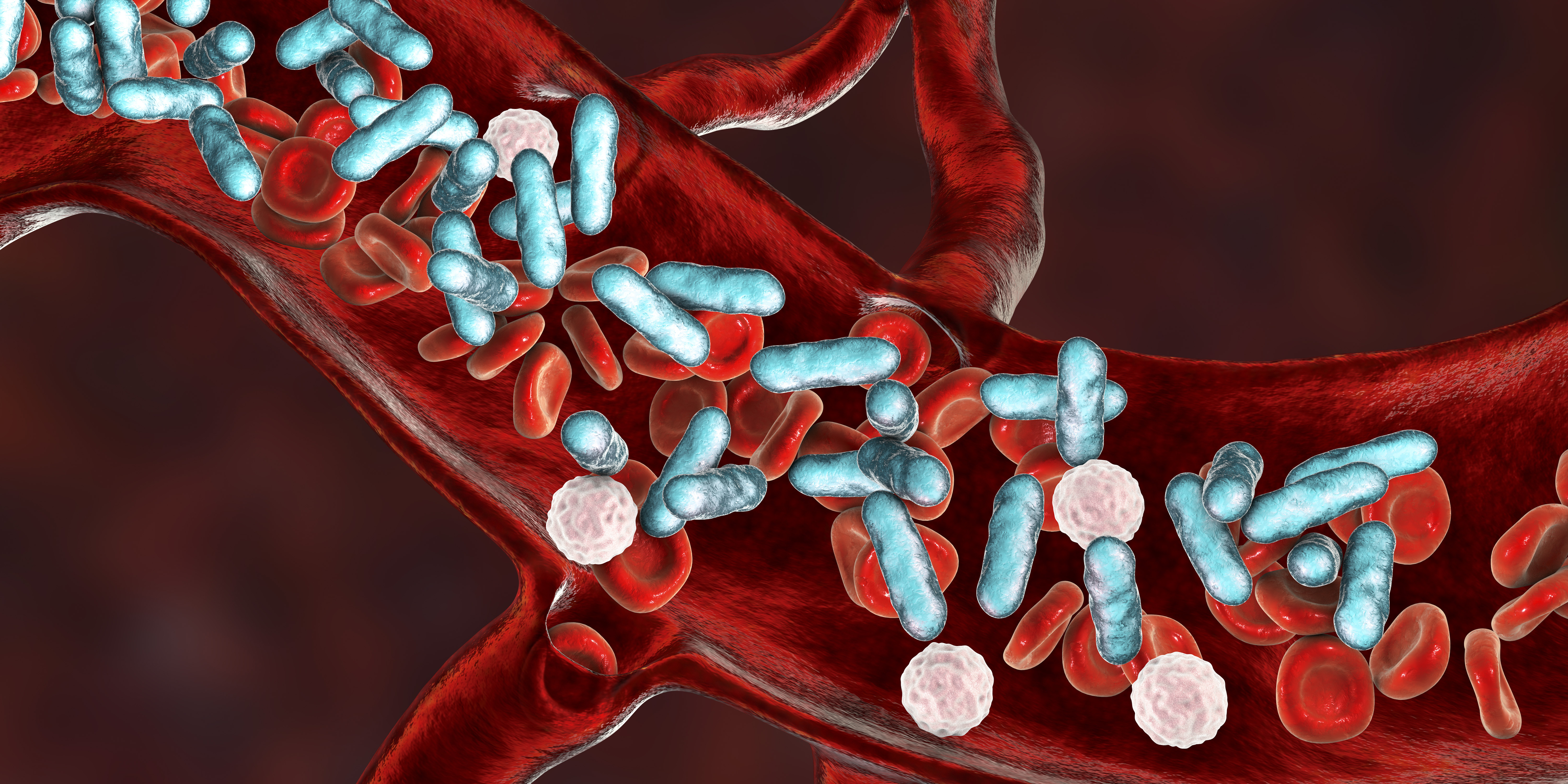A Nanotrap to Improve Survival in Severe Sepsis by Attenuating Hyperinflammation Through Hemoperfusion
This optimized nanotrap therapy in combination with a moderate antibiotic treatment resulted in a 100% survival rate in severe septic mice.
The mortality rates in severe sepsis patients are 30‑41%. In the U.S. alone, 1.7 million people develop sepsis on a yearly basis. Effective therapies to prevent or treat the cytokine storm or septic shock that often leads to mortality are lacking, with single mediator targets failing. With current treatments, conventional adsorption resins are made of hydrophobic polymers for nonspecific adsorption of biomolecules, for example, Cytosorb® for multiple cytokine adsorption. However, the spectrum of molecular adsorption in these cartridges is fixed by the chemistry of the resin, which appears insufficient in clinical trials. The management of hyperinflammatory reactions is as important as effective infection control in bacteremia sepsis, which is even critical for viral sepsis, given no effective antiviral drugs. The precise immune modulation is critical for sepsis treatment because of the dynamic and dysregulated immune system in patients.
In contrast to conventional absorption resins, researchers at SUNY Upstate Medical University have developed a hydrophilic, inert, and antifouling PEG-based PEGA resin for immobilization of versatile telodendrimer (TD) nanotrap (NT), which avoids cell adhesion. Researchers have discovered that the immobilization of TD-NTs in size-exclusive hydrogel resins simultaneously adsorbs septic molecules, e.g. lipopolysaccharides (LPS), cytokines and damage- or pathogen-associated molecular patterns (DAMPs/PAMPs) from blood with high efficiency (92–99%). Distinct surface charges displayed on the majority of pro-inflammatory cytokines (negative) and anti-inflammatory cytokines (positive) allow for the selective capture via TD NTs with different charge moieties. The efficacy of NT therapies in murine sepsis is both time-dependent and charge-dependent.

This nanotrap technology is particularly effective for gram negative bacteria caused sepsis which makes up 50% of most sepsis cases. Providing efficient protein encapsulation with multiple charges and hydrophobic moieties on the dendritic periphery, the well‑defined linear‑dendritic telodendrimer nanoplatform has precise and engineerable chemical structures for customized nanocarrier design in drug delivery. The 'octopus like' structure can be tailored in design, shape, structure and density based on the makeup of the lipopolysaccharide (LPS), enabling more efficient binding. Once put back into the body, the TD nanotrap will trigger the release of microphages to fight the rest of the infection, reduce swelling, and treat cytokine storm.
For treatment of sepsis caused by virus or bacteria.
https://patents.google.com/patent/WO2019051121A1/en?q=Compositions+Devices+Removal+Endotoxins+Cytokines&inventor=Juntao+Luo&oq=Juntao+Luo+Compositions+and+Devices+for+Removal+of+Endotoxins+and+Cytokines
The combination of the optimized NT therapy with a moderate antibiotic treatment resulted in a 100% survival rate in severe septic mice by controlling both infection and hyperinflammation, comp only 50–60% with the individual therapies. Cytokine analysis, inflammatory gene activation and tissue histopathology strongly support the survival benefits of treatments.  https://www.nature.com/articles/s41467-020-17153-0
https://www.nature.com/articles/s41467-020-17153-0
Patent Information:
| App Type |
Country |
Serial No. |
Patent No. |
Patent Status |
File Date |
Issued Date |
Expire Date |
|